The Modern meta is always evolving and has quite a few powerful combo decks seeing play at any given time. Right now, the three-color combo deck simply known as “breach” is at the top of the pack. So, today we’ll cover what the deck is, how it plays, and the key cards that allow it to do its thing. Let’s start off with a very brief overview of what a Modern breach deck wants to be doing.
Breach decks take their name from the enchantment Underworld Breach. It uses the name-sake card to recur zero mana artifacts from the graveyard, mill its entire library with Grinding Station, and then win via Thassa’s Oracle. The deck can also win through regular combat damage with its creatures as well.
With that out of the way, let’s move on to a more in-depth discussion of the archetype. Including looking at the cards that enable and support the combo, where the deck wants to be in different stages of the game, how to beat breach decks, and finally, a decklist.
Overview – How Does Breach Combo Work?
I would like to start with a more thorough explanation of how the breach combo actually works. Having a good understanding of what’s happening will make you a better breach player and increase your odds of winning when playing against it.
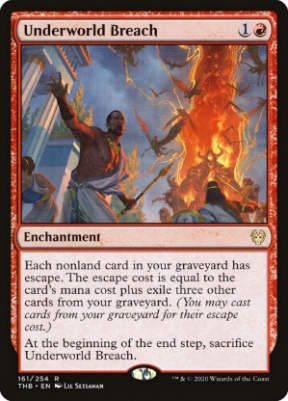
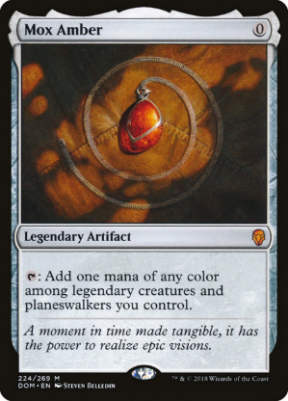
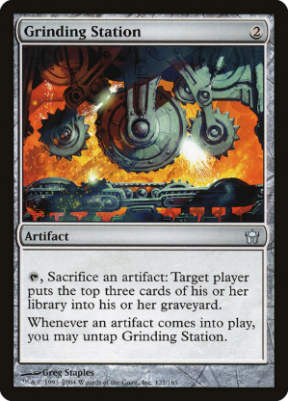
As mentioned, the combo starts with Underworld Breach. It allows you to cast non-land cards from your graveyard by paying their mana cost and exiling three cards. It also exiles itself at the end of the turn. So, with this card on the battlefield, you can cast zero mana spells like Mox Amber by simply exiling three cards. Having one of these zero-mana spells and at least three other cards in your graveyard is very important.
The third and final combo piece is Grinding Station and it needs to be in play. Assuming you’ve met all these requirements, here’s how you win. First, cast Mox Amber from your graveyard by exiling three cards. Next, tap it and float a blue mana. Then tap Grinding Station and sacrifice it, milling yourself for three cards. Now, your zero mana artifact and the three cards you just milled are in your graveyard – Exile those three cards and cast your artifact again.
When you do, you’ll untap Grinding Station and can repeat this process in a loop until you have no cards in your deck. Once your entire deck has been milled, you can cast Thassa’s Oracle from your graveyard (thanks to Underworld Breach and the mana from Mox and you’ll win the game thanks to your empty library when Thassa enters the battlefield.
Non-Combo Breach
The most recent versions of the deck have been playing a non-combo version without Grinding Station. This version still plays Underworld Breach but simply uses it to generate value with things like Mishra’s Bauble. This version wins via combat damage with the creatures mentioned below.
Support Cards
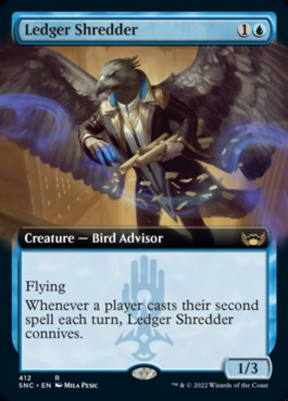
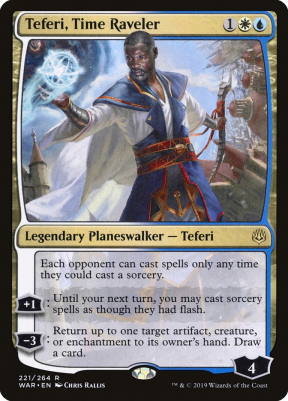
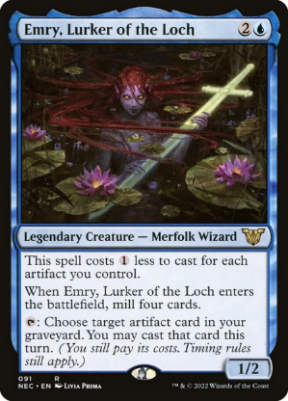
Aside from the combo pieces that were covered above, here are some of the key cards that help the deck run smoothly. An important thing to realize here is that breach decks are not “all in” on the combo. It plays some aggressive, value-based creatures and has enough control/interaction to survive and thrive outside of the combo.
Ledger Shredder
This is a card that you’ll always see four copies of in breach builds and it serves two purposes. First, the connive ability helps to draw cards and churn through your deck looking for combo pieces. The discard portion of the ability comes in handy for filling your graveyard early and getting rid of redundant cards. Second, it presents an evasive threat that can pressure opposing life totals when necessary.
Emry, Lurker of the Loch
Emry, Lurker of the Loch isn’t a card that is in every list but it does make a lot of sense. When it enters the battlefield you’ll mill four cards and this helps to set up to pay the initial escape cost for Underworld Breach. Next, it allows you a way to recur an artifact from your graveyard, which can be helpful in generating some extra value at times. For example, using it to get back a Grinding Station that an opponent has destroyed.
Furthermore, being able to recur certain sideboard cards like Engineered Explosives and Tormod’s Crypt multiple times can be backbreaking against some decks. With the right setup of cards, Emry can come out as early as turn one thanks to the cost reduction from your artifacts.
Teferi, Time Raveler
Teferi, Time Raveler is a very important card that you’ll usually see two copies of. The main purpose in the deck is the static ability, which will stop opponents from casting counterspells or enchantment removal on the turn you want to combo off.
Expressive Iteration
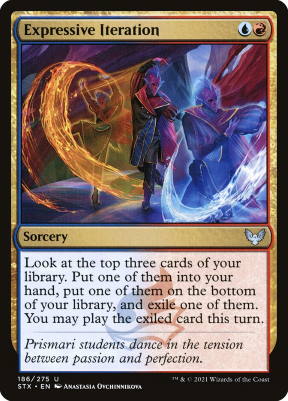

This a simple card but it is amazing in the deck. It is a cantrip that allows you some great card selection and access to an extra card to cast. It’s great for finding any combo pieces you may be missing or digging for removal when you need it. Consider fills a similar role. It allows you to see your top card and put it into your graveyard if you want. This is great because it digs for combo pieces, helps to fill the graveyard, and then replaces itself with a new card.
Aether Spellbomb & Springleaf Drum
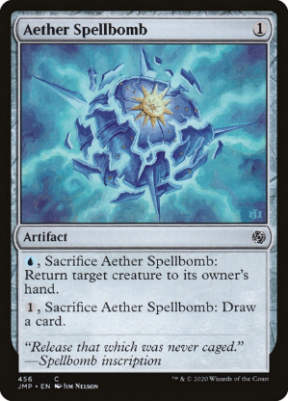
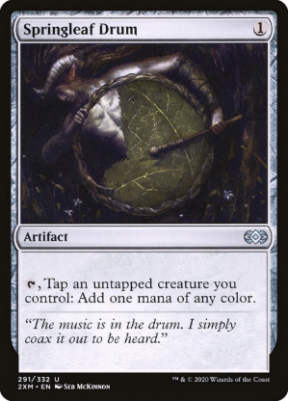
Both of these artifacts offer some tech. Spellbomb is mainly used to bounce opposing creatures when needed and be a cantrip when the unsommon isn’t needed. However, there are a few cool things you can do with it if you play Emry, Lurker of the Loch. First, reanimating the spell bomb allows you a way to draw cards on every turn. Next, you can bounce your own Emry back to hand to mill more cards with her.
Springleaf Drum is simply there as a means of gaining extra mana and accelerating the deck toward the win. While I haven’t mentioned any yet, there are quite a few creatures in the deck that can be turned into mana.
Removal // Interaction
Breach plays a lot more interaction than most combo decks. As a result, the deck is far from fragile and can handle quite a bit of opposition. Here’s what you’ll usually see in a Modern breach deck:
Creatures
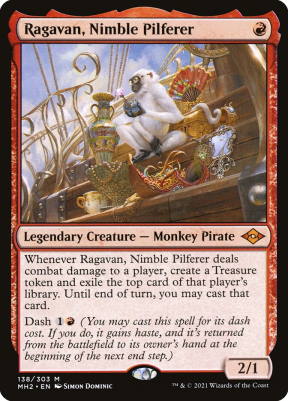
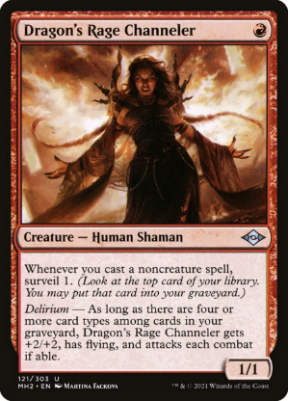
Remember when I said Modern breach decks played more interaction than other combo decks? Well, it plays more creatures than most too. I say this because neither of these creatures is a combo piece or direct enabler and yet, there are playsets of both without fail. Why? Because they’re good.
Dragon’s Rage Channeler does help support the combo by allowing you to add cards to your graveyard. Aside from that, they’re simply great creatures and they represent a legitimate threat to opponents. Breach is not a combo deck that you’ll be able to
Between four Ragavan, Nimble Pilferer, Dragon’s Rage Channeler, Ledger Shreader, and Lightning Bolt the deck can 100% win through combat damage.
Urza’s Saga
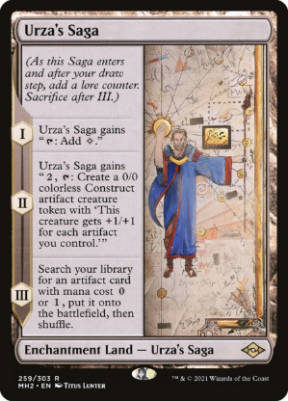
The archetype often plays Saga in the mana base. Given the number of low-mana artifacts in the deck, the second chapter can produce some very large construct tokens. While the final chapter can tutor out the Mishra’s Bauble, Aether Spellbomb, and Springleaf Drum if you play them.
Related: The Best Lands In Magic: The Gathering – A Complete Guide
It is worth noting that the most recent breach lists have not been playing Saga at all. As the deck moves away from the combo and more toward a value-based strategy it becomes less helpful and more clunky.
How Does The Deck Play – Early, Mid, And Late Game
Here is where I usually break down where the deck wants to be at different stages of the game. However, breach is far from a linear deck so there are no clear-cut answers here. How you’ll play the deck is based on what your opponent is doing and the state of each game.
For example, If your opponent is playing heavily to stop you from combing off, you can focus on your attacking with your creatures and pressuring them. If someone commits most of their resources to remove your threats, then you’ll likely need to lean more into a combo victory. Sometimes the deck plays like a combo deck. Other times you’ll be taking on an aggro or even control role. It all depends.
I can, however, attempt to offer a few tips for each portion of the game.
Early Game
First, turn one Ragavan, Nimble Pilferer is a good start. It comes down early and starts applying pressure, Plus, hopefully, creating some treasures. If you have an opening hand containing a land, Mox Amber, Ragavan, Nimble Pilferer, and Springleaf Drum you can cast a turn one Emry, Lurker of Loch.
In situations where you have a Mishra’s Bauble and Ledger Shredder it’s usually correct to hold onto the Bauble until you’ve cast Shredder. This assures that you’ll get to connive when you cast Bauble. Another thing to note here is that Urza’s Saga can be clunky in your opening hand if you don’t have other lands that can produce colored mana.
Mid Game
Again, nothing is set in stone here. In short, you’ll likely be figured out what role you’re playing in the matchup now. If you’re on the combo plan, and haven’t won yet, Consider and Expressive Iteration are great for finding whatever you need to combo. If you’re playing Urza’s Saga in your deck, the midgame is a great place to start creating some construct tokens.
It’s important to remain flexible in this portion of the game. If your opponent hasn’t hated out the combo win it’s always an option. I often find myself taking what my opponent gives me and playing accordingly. If you have favorable attacks, attack. If you can block and trade with an important creature, maybe that’s the move. Thinking “how do I win this game and how do I lose it” and playing to the answers is my best advice here.
Late Game
Modern breach decks don’t necessarily mind being in the late game, depending on the circumstances. However, there are a few things that you’ll want to consider when you go to close out games. First, is that you don’t exile any Thassa’s Oracle that you may have milled with Grinding Station. Just so we’re clear when you have cast something from your graveyard with Underworld Breach, you have to exile three cards. Don’t exile your Oracle. I’ve seen pilots do it and have no way to win the game.
Second, be very cautious about Endurance. If someone does away with your graveyard with breach on the stack you get blown out. Don’t be overly paranoid but if you suspect your opponent has Endurance you may have to wait for Teferi, Time Raveler, or Spell Pierce backup.
Lastly, consider all your win cons. Let’s say you have Emry, Lurker of the Loch and a Grinding Station in play, but no Mox Amber. Depending on the situation, sacrificing Station to itself to Mill your opponent isn’t a terrible plan as you can recur it with Emry.
How To Beat Breach
Here are some tips and tricks when going against Modern breach decks.
- Don’t
Board Out Your Removal – As mentioned, breach isn’t just a combo deck. The deck has a lot of creatures and can be very aggressive. - Know The Combo – Understanding when what your opponent needs to combo off and when they do and don’t possibly have the win is important. I’ve seen inexperienced players concede to Underworld Breach being cast when they weren’t in danger of losing. Understanding the combo helps to know where to point your effort.
- Don’t Neglect Your Strategy – Being too concerned about what the other player is doing can be dangerous. Obviously, you want to answer threats but don’t forget to let yourself be put on the back foot and forget to play your game.
How To Sideboard Against Breach
Here are some concepts and advice to help you out in games two and three against breach. Honestly, almost every card in a typical Modern sideboard is good against breach. For example, graveyard hate stops the combo. Artifact and Enchantment removal remove combo pieces. Anti-storm cards make combing off impossible. Things like Chalice of the Void on zero or one will counter almost the whole deck. And removal/board wipes have no lack of targets.
However, you have to remember that any one of these many things isn’t a silver bullet all by itself. The deck is a top-tier deck because of its versatility and resilience. You also have to be careful not to overdo it on sideboard. Let’s say you have 15 sideboard cards that could be useful. Ask yourself if your deck will still play well if you remove that many mainboard cards.
What To Bring In:
Graveyard Hate
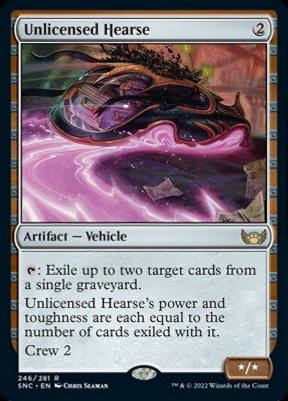
Things that remove the graveyard from play are great for stopping the combo. Things like Endurance are great options because they can’t be bounced with Aether Spellbomb. That said, anything that removes the graveyard from play with Underworld Breach on the stack is great. Unlicensed Hearse, Ashiok, Dream Render, and Tormod’s Crypt are all good options.
Extraction Effects

Cards like Surgical Extraction and Extirpate can also do a great job of hindering the combo portion of the deck. If you
Pithing Needle
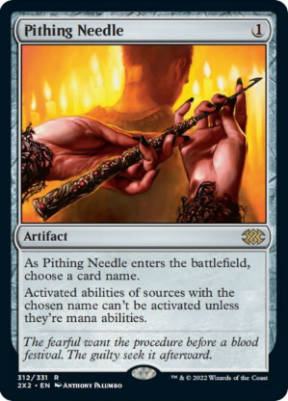
Pithing Needle can turn of a few key portions of the deck. For example, naming Emry, Lurker of the Loch, Grinding Station, Teferi, Time Raveler and Urza’s Saga are all great targets.
Chalice of the Void
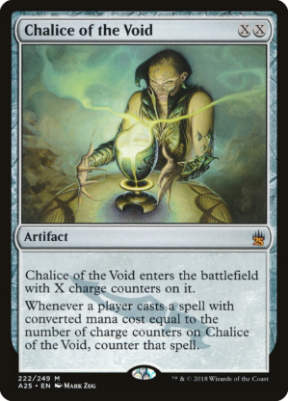
Chalice is one of my favorite hate cards in this matchup. A Chalice on zero nerfs the combo and a Chaice on one helps to combat the aggro/value portion of the deck.
Anti-Storm Cards
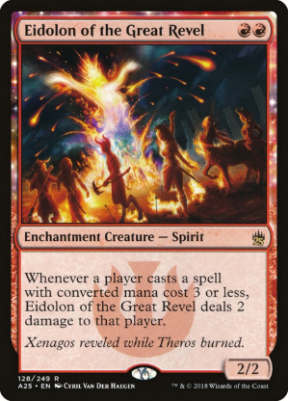
If you have cards like Eidolon of the Great Reval, Damping Sphere, or Deafening Silence in your sideboard, they can be quite useful for stopping your opponent from recasting Mox Amber over and over again.
What To Take Out:
You have to remember that the combo is only half of the battle. So, when you’re taking cards out you need to be careful. I would avoid taking out removal spells in favor of combo hate. Now, you do have to address the combo. I usually “trim” wherever possible. Just take out whatever you can live without four copies of to leave the core of your strategy strong and maintain your ability to deal with the creature portion of the deck.
Deck List
Jeskai Breach
| Deck (0) Creature (12) 1 Haywire Mite 1 Thassa’s Oracle 3 Ledger Shredder 3 Emry, Lurker of the Loch 4 Ragavan, Nimble Pilferer Artifact (11) 1 Springleaf Drum 1 Aether Spellbomb 2 Mox Amber 3 Grinding Station 4 Mishra’s Bauble Instant (6) 2 Lightning Bolt 4 Unholy Heat Sorcery (4) 4 Expressive Iteration Land (27) 4 Urza’s Saga 4 Underworld Breach 2 Teferi, Time Raveler 1 Spirebluff Canal 1 Arid Mesa 1 Island 1 Breeding Pool 1 Hallowed Fountain 1 Sacred Foundry 1 Mountain 2 Steam Vents 4 Flooded Strand 4 Scalding Tarn | Sideboard (15) 1 Teferi, Time Raveler 1 Drannith Magistrate 1 Tormod’s Crypt 1 Pithing Needle 1 Shadowspear 2 Fury 2 Engineered Explosives 2 Prismatic Ending 2 Wear // Tear 2 Spell Pierce |
End Step
Modern breach is an extremely fun deck. It’s a combo deck capable of very fast wins but it isn’t fragile. It can play like a combo deck, an aggro deck, a tempo deck, or even a control or midrange deck at times. If you like to play decks that aren’t linear and play out a little differently, you’d love breach. Hopefully, this archetype overview has piqued your interest and you give the deck a try.
